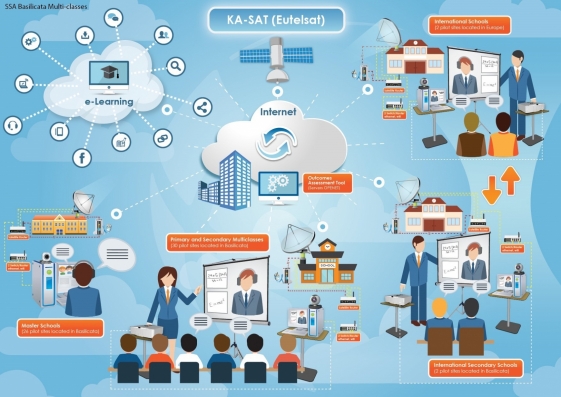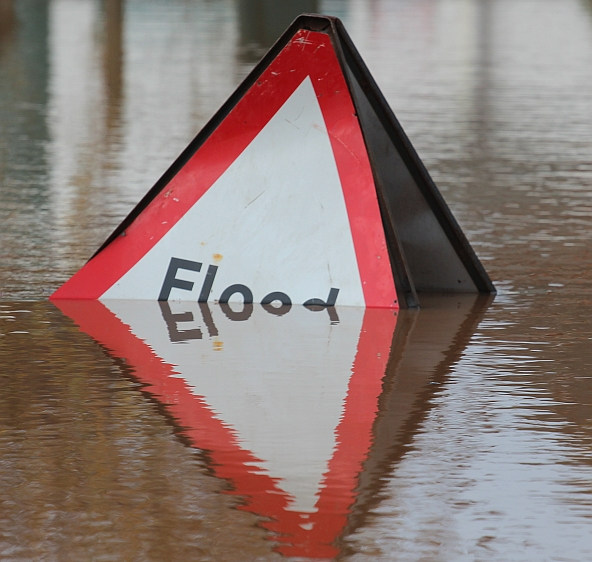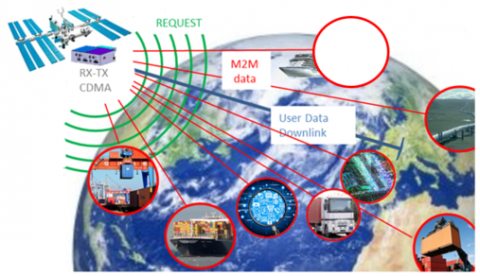Reducing the risk of bird strikes using satellite images and Ascend’s Normalised Difference Water index software (NDWI)
BROWSE PROJECTS
Based on user needs and industry skills, the evolution of customized solutions and the establishment of innovative services is accomplished through project activities. Focusing on various thematic areas, relevant information on the project activities is provided below.
SatApps
Status date: 19 September 2017
Internet of Things/IoT – M2M – industry 4.0 – these headlines are representing large user groups which have an urgent need of a globally available, low-cost, secure data service, dedicated to very small data volumes per sensor and for use also in remote areas. The objective of the study is to perform an in depth requirements analysis on 2 focus pilot user groups: railway transportation and container/waste management.
SUMO
Status date: 05 September 2017
SUMO is a service to assist in the planning and monitoring of marine operations for offshore wind farms. The service integrates diverse information to allow the monitoring and forecasting of metoceanic conditions and track the locations of vessels and personnel involved.
This improves the management and coordination of the construction, operations and maintenance activities and leads to increased efficiency and safety.
SatSoHoAfrica
Status date: 20 May 2016
SatSoHoAfrica is allowing the provision of competitive broadband internet services to Small-office-Home-office (SoHo) users in Sub-Saharan Africa.
Intelligent sensor and satellite network (ISSN)
Status date: 02 December 2016
The project is a feasibility study in order to establish whether there are sufficient market opportunities, and the technological maturity for developing a flexible and reliable intelligent sensor network where satellites are among the nodes in the network (ISSN). ISSN has a number of potential application areas in connection with Offshore Oil & Gas exploration and production, environmental surveillance in general, safety, search and rescue, transportation etc.
GridWatch FS
Status date: 22 March 2016
The solution intends to provide owners of High Voltage power infrastructures with useful information for supporting the management of both procedures for inspection and maintenance, and dispatching of electrical energy.
Improving the Efficiency of Loss Adjustment and Claims Management in the Insurance Industry
Status date: 13 July 2016
The study analyses the feasibility and viability potential of an earth-observation based service for supporting the claims management process in the forest insurance industry. A main aspect is loss adjustment after large-scale disasters with a focus on storm events and forest fires.
Infoterra
Status date: 21 May 2012
This study was designed to determine the feasibility of the use of space assets such as satellite communications, positioning, and Earth Observation to support the humanitarian mine action community.
Uam®
Status date: 27 July 2017
e2E intends to offer more affordable data communication services into niche markets currently underserved from existing infrastructure or where traditional satellite delivery is too expensive. The core of the service concept builds on two key technologies that have been developed with small airborne IDP networks in mind that incudes RPAS, HAPS and small satellites.
EFFORS-FS
Status date: 25 August 2015
The aim of the present feasibility study is to develop an Enhanced Flood Forecasting System for Critical Infrastructures Protection in medium size Alpine catchments.The service is designed to address infrastructure located either on the river itself (e.g. bridge) or in the flood plan (e.g. a building).
KABALIST
Status date: 13 July 2017
The project is focused on the set up of reliable and cost effective distribution of live video feed of non-mainstream sport events into the Internet. The context and the proposed pilot service is tailored to the Serie C Italian football league. The novelty introduced with this pilot project is the adoption of uplink in Ka-band using inexpensive and semi-permanent installations to the stadiums, supported by a set of features to ensure compliance with the targets in terms of availability, quality, accessibility and costs.
CyMonS
Status date: 22 June 2017
CyMonS offers spatial and high-frequency water quality monitoring of inland surface waters, combined with a 1 to 5 days forecast for cyanobacteria scums. The service integrates Sentinel-2 imagery, hand held monitors (EcoSpot & WISP-3) and fixed position monitors (EcoWatch) to monitor cyanobacteria with a high spatial scale. The algae forecasting model allows water authorities to timely issue warnings and take mitigation measures.
Com4Offshore
Status date: 27 June 2017
The Com4Offshore services enable communication and information exchange between offshore and onshore supporting logistics processes and construction workflow with the aim to significantly reduce the time and costs of the costly offshore construction projects. It offers:
- Satellite based public service supporting the communication needs of the different user groups in offshore wind farm areas.
- Technically and economically optimal solution to the users irrespective of their location by combining wireless, mobile and satellite network technologies.
- Access communications services, sensor devices & software applications for offshore construction activities




































